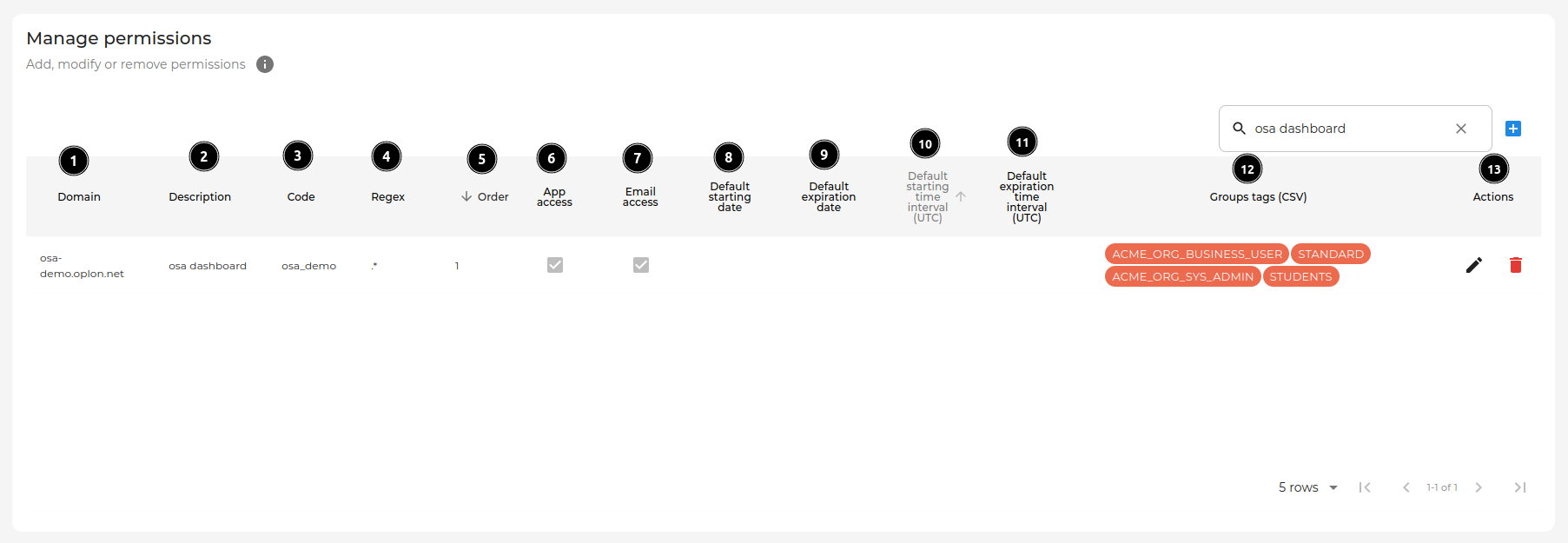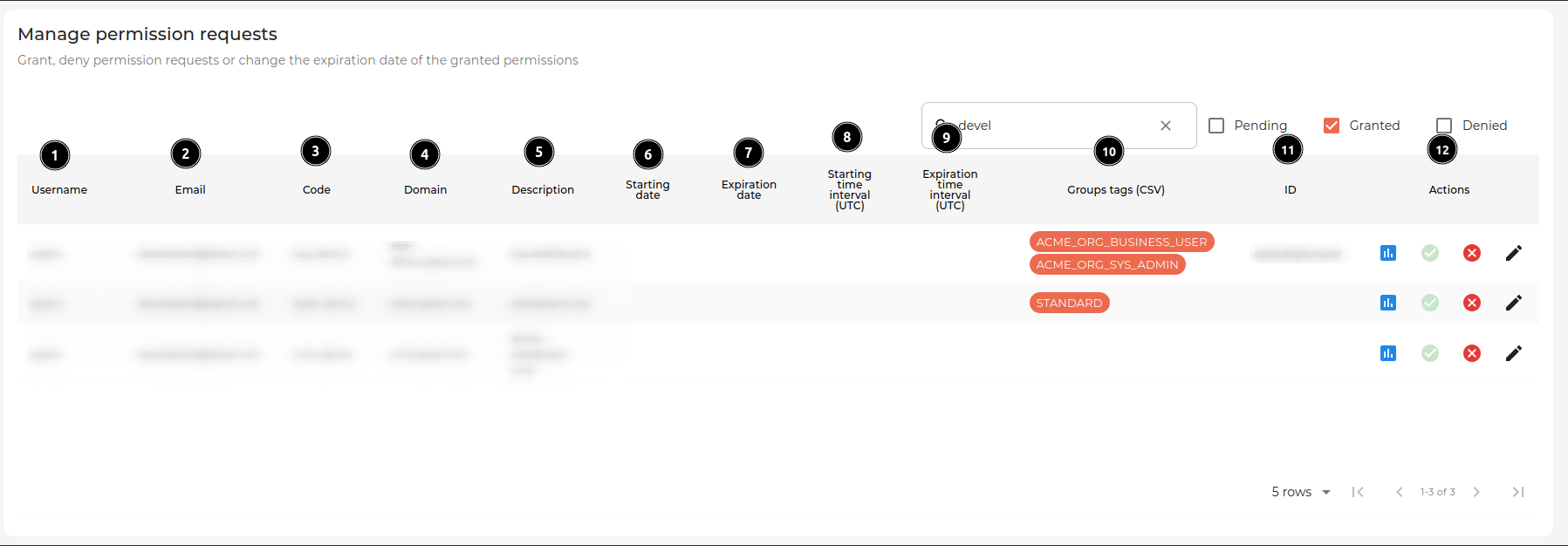MFA Manager Guide
The manager is the person who manages the permissions and requests for permission relating to one or more domains.
Manage permissions
Manage permissions:

The permissions are the entities that declare which URL (ie schema://domain/path),
among those managed by the manager, must be protected by MFA.
Permission management table legend:
- Domain: domain where is applied the permission
- Description: description of the rule
- Code: permission code, it must be explanatory and meaningful in a way that it is also clear to the user
- Regex: regular expression of the permission
⚠️
The same regex must be applied on Oplon ADC through customization of the rule rewrite header: 2faGeneric.
- Order: order of execution of the permit. The order of execution is the natural number.
Higher numbers identify priority in the execution of regexes.
The first permission
.*contains the second/test. For this reason, without a correct order of the regexes, the rule will continue to trigger.*also for/test. If, on the other hand it is indicated correctly the execution order that is, for.*execution order 1 is assigned, while for/testit is assigned execution order 2, the permissions will click correctly: for a path/testit will click only permission with regex/testand permission with regex.*. - App access: if flag to
trueit enables login via app - Email access: if flag to
trueit enables login via email - Default starting date: default start of the permission before which it will no longer be active (can be overriden)
- Default expiration date: default expiration of the permission after which it will no longer be active (can be overriden)
- Default starting time interval (UTC): start time (ex: 9am) (can be overriden)
- Default expiration time interval (UTC): expiration time (ex: 8pm) (can be overriden)
- Groups Tags: it is a declarative field that allows you to send information to the protected application (endpoint application). It is a CSV field,it can be populated with strings separated by commas.
- Actions: edit or deletion
Management of permission requests
In this table the manager has the possibility to perform actions on user permission requests.
Management of permit requests:

Permission requests can be found in this table:
- Pending (Pending) or awaiting an action by the Manager
- Granted (Accepted) or accepted by the manager
- Denied (Denied) or rejected by the manager
In the Granted permission requests it is possible to modify the permission request by entering:
- Username: username asking the permission request
- Email: email asking the permission request
- Code: permission code, it must be explanatory and meaningful in a way that it is also clear to the user (inherited from permission)
- Domain: domain where is applied the permission (inherited from permission)
- Description: description of the rule (inherited from permission)
- Starting date: start of the permission before which it will no longer be active (overrides the default)
- Expiration date: expiration of the permission after which it will no longer be active (overrides the default)
- Starting time interval (UTC): start time (ex: 9am) (overrides the default)
- Expiration time interval (UTC): expiration time (ex: 8pm) (overrides the default)
- Groups Tags: in this field it can be inserted through multiple selection some or all Groups Tags fields declared in the permission in the table Permission Management
- ID (impersonifcation): it is a declarative field that allows you to send information To the application protected by MFA (endpoint application).
- Actions: grant, refuse or edit a permission request